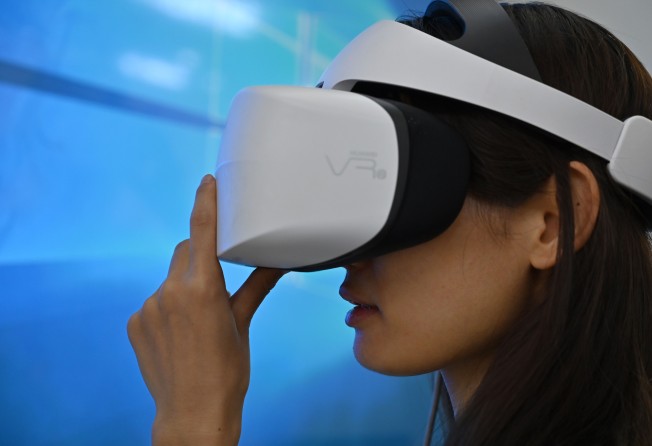China’s virtual reality market set to expand, driven by increased policy support, 5G network roll-out
- The country’s VR market is forecast to reach US$7.9 billion by 2021, as 5G mobile networks are deployed nationwide
- China is already an important production base for VR devices in the world, according to an MIIT official

China’s virtual reality (VR) market is forecast to expand to 54.45 billion yuan (US$7.9 billion) by 2021, fuelled by increased policy support from Beijing, according to the industry regulator, as advanced 5G mobile networks are rolled out across the country.
“The compound annual growth rate of the VR market is expected to reach 91.2 per cent,” said Wu Shengwu, deputy head for the electronic information division of the Ministry of Industry and Information Technology (MIIT), at a press conference in Beijing on Thursday.
Wu said China has already become an important production base for VR devices in the world. The ministry, he said, will step up policy support and guide local governments across the country to introduce more measures that would help spur the development of this industry.
The VR industry had received a strong endorsement from Beijing at the end of last year, when the MIIT issued a two-step development plan to help accelerate the market’s growth.
The latest announcement comes as the country prepares for the roll-out of next-generation mobile networks, following the government’s recent award of commercial 5G licences to China Mobile, China Unicom, China Telecom and the China Broadcasting Network.
With peak data rates up to 100 times faster than 4G, 5G networks will able to support the growing number of connected devices globally, including fitness-tracking watches, internet-linked televisions and smart speakers at home, as well as apps based on VR and augmented reality (AR) technologies.
VR immerses a user in an imagined world, like in a video game or movie, with the aid of an opaque headset, such as Facebook’s Oculus. AR provides an overlay of digital imagery onto the real world with the use of a clear headset, like Microsoft’s HoloLens.
Worldwide shipments of AR and VR headsets are predicted to reach a combined 8.9 million units in 2019, up 54.1 per cent from a year ago, according to research firm IDC.
By 2020, China wants to initially establish a basic domestic VR supply chain. The country aims to have key VR patents, industry standards and globally competitive VR companies by 2025.
“The MIIT will continue to support the building of a VR manufacturing innovation centre, advance the research and development of core VR technologies, and promote VR applications industry-wide,” Wu was quoted as saying by state news agency Xinhua on Thursday.
China’s VR development will not only help promote new products and services, but also have a major influence in the economy, technology, culture and military, according to the MIIT guideline.
It said VR technologies would be applied in the manufacturing, education, culture, health care and commerce industries. Adopting VR technologies in research and development, testing and maintenance, and training in the manufacturing sector would help enterprises improve their design and service capabilities, according to the government.